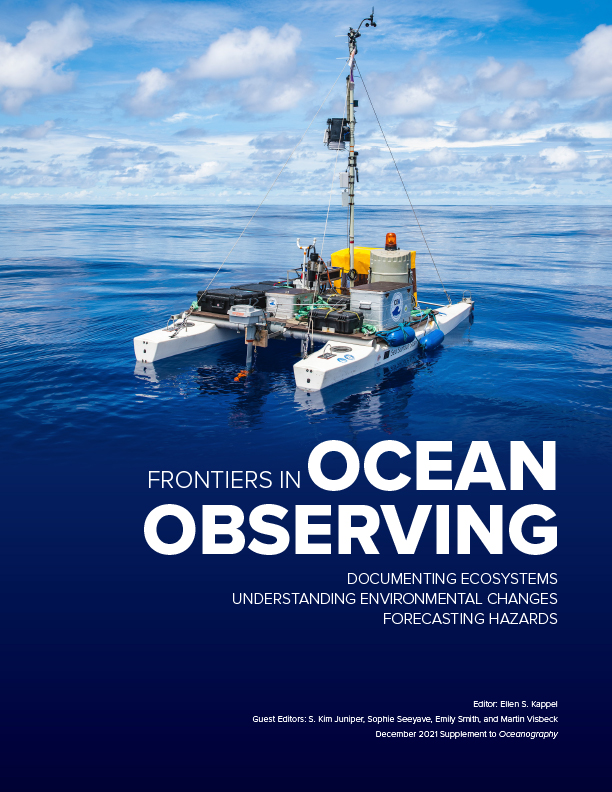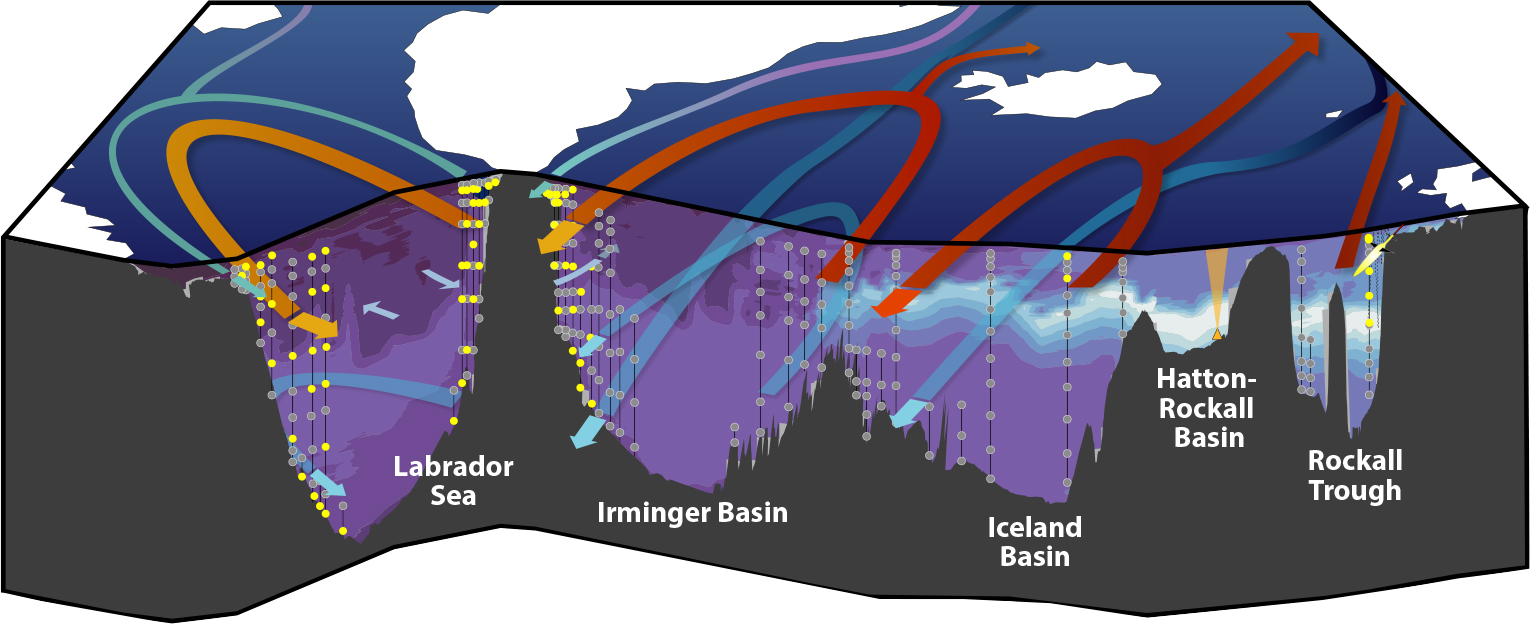Full Text
The Atlantic Meridional Overturning Circulation (AMOC) is a system of ocean currents that transports warm, salty water poleward from the tropics to the North Atlantic. Its structure and strength are monitored at several latitudes by mooring arrays installed by the international ocean sciences community. While the main motivation for deploying these mooring arrays is to understand the AMOC’s influence on Northern Hemisphere climate, the circulation system also plays a crucial role in distributing oxygen (O2) and carbon dioxide (CO2) throughout the global ocean. By adding O2 sensors to several of the moorings at 53°N–60°N (Figure 1) in the western Labrador Sea, Koelling et al. (2021) demonstrated that the formation of deep water, in which the AMOC brings surface water to the deep ocean, is important for supplying the oxygen consumed by deep-ocean ecosystems throughout the North Atlantic. Additionally, variability in the deep-water formation has been linked to changes in the amount of anthropogenic CO2 stored in the subpolar ocean (Raimondi et al., 2021). These studies, using data collected during research cruises and a small number of moored sensors, showed that deep-water formation and the AMOC are key to oxygen and carbon cycles in the North Atlantic. However, the common assumption that the magnitude and variability of O2 and CO2 uptake by the ocean are tied to the dynamics of the AMOC has never been evaluated on the basis of direct observations.
The Gases in the Overturning and Horizontal circulation of the Subpolar North Atlantic Program (GOHSNAP) takes on this challenge. GOHSNAP is a US National Science Foundation funded and international collaborative effort to collect the observations necessary to relate the ocean uptake of carbon and oxygen to the ocean circulation in the Atlantic. Linking oxygen and carbon cycling to the knowledge of AMOC will have three important outcomes. First, it will aid in reconstructing the past variability in oxygen and carbon by leveraging decades-long multinational observations of AMOC. Second, it provides an opportunity to “take the ocean’s pulse,” record and understand the uptake and transport of O2 and CO2 right now, and more robustly predict future changes. Third, supplemented by the observations from the SeaCycler mooring in the central Labrador Sea (Atamanchuk et al., 2020) and the Biogeochemical Argo program in the region, GOHSNAP will provide unique information on the contemporary carbon cycle, including linkages between the Labrador Sea and the adjacent basins.
GOHSNAP has benefited from close collaboration with international partners to add over 30 dissolved gas sensors to the OSNAP (Overturning in the Subpolar North Atlantic Program) mooring array, joining about 20 sensors previously deployed by a Canadian/German collaboration in the western Labrador Sea (Figure 1). In 2020, the Woods Hole Oceanographic Institution added another 25 sensors to monitor the Irminger Current. Collectively, these 70 sensors will enable quantification of the full-depth transport of oxygen into and out of the Labrador Sea and provide insights into the CO2 uptake and transport in the region.
The ongoing effort to expand direct observations of oxygen and carbon by adding to the existing mooring array is a prime example of how oceanographers can investigate interrelated oceanic processes through international collaborations to efficiently advance research priorities that cross geographic and disciplinary boundaries.
|
|


